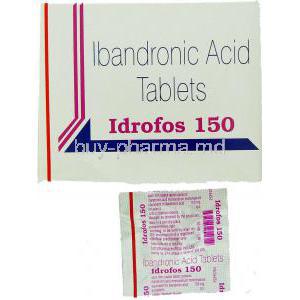Mechanism of Action of Boniva Ibandronate and Its Warnings and Precautions
Title: Mechanism of Action of Boniva Ibandronate and Its Warnings & Precautions
Boniva with the active ingredient Ibandronate can be categorized in the same class as alendronate and risedronate. Its mechanism of action is all about its affinity for hydroxyapatite which is a component of the mineral matrix of bone. It functions by inhibiting osteoclast-mediated bone reabsorption and preventing the breakdown of bone cells called osteoclasts.
This nitrogen-containing bisphosphonate is prescribed for patients who are highly vulnerable to osteoporosis, such as postmenopausal women. Boniva (Ibandronate) lowers the increased rate of bone turnover, resulting in a net gain in bone mass and bone strength and also cuts down the risk of hip fractures and other bone fractures.
Warnings and Precautions
Enriching your knowledge on various warnings and precautions of Boniva is vital for safe and effective treatment. Let’s first discuss the precautions related to upper gastrointestinal adverse reactions.
Gastrointestinal Disorders
Like any other bisphosphonate drugs, the oral administration of Boniva may cause upper gastrointestinal disorders like esophagitis (inflammation of the esophagus), dysphagia (difficulty or painful swallowing), and esophageal or gastric ulcer. The only way to minimize the risks associated with these disorders is to abide by the dosing guidelines closely. You should discontinue the medication if any new or aggravating symptoms come to the fore.
Hypocalcemia & Mineral Metamorphosis
The next precaution is about hypocalcemia (abnormally low level of calcium in the blood) and mineral metabolic process. Hypocalcemia and other bone-related disorders and mineral metabolic process must be treated properly before beginning Boniva (Ibandronate) treatment. Patients with hypocalcemia should increase the consumption of calcium and vitamin D to keep this ailment at bay.
Musculoskeletal Disorders
The risk of musculoskeletal pain is also present when you take Boniva and other bisphosphonates. Patients have reported terrible and at times disabling bone, joint, and/or muscle pain by taking this drug. All these adverse effects may come out from one day to several months after commencing the treatment. However, majority of patients overcome these symptoms when they stop the therapy. A study showed that one group of patients experienced the return of symptoms related to musculoskeletal when resumed Boniva (Ibandronate) or another bisphosphonate. Think about giving up the drug if life-threatening symptoms develop.
Osteonecrosis of the Jaw
Osteonecrosis of the jaw is another warning associated with patients treated with Boniva and other bisphosphonates. The most vulnerable group includes cancer patients going through dental procedures. But, this condition has also been reported in patients with postmenopausal osteoporosis or other diagnoses. The factors known to create and develop osteonecrosis are a cancer diagnosis, co-occurrence of therapies like radiation, chemotherapy and corticosteroids, and co-morbid disorders such as anemia, infection, coagulopathy, and pre-existent dental disease. Most patients have reported osteonecrosis when treated with Boniva intravenously (injected through a vein). But, some cases have been reported in patients treated orally.
Dental surgery in patients who have developed osteonecrosis of the jaw while continuing Boniva (Ibandronate) therapy may worsen the condition. There is also no concrete information available on whether the discontinuation of Boniva treatment can mitigate the risk of osteonecrosis of the jaw. So, it all depends on the judgment of your healthcare provider to clinically evaluate your existing condition and adopt the best possible treatment option.

